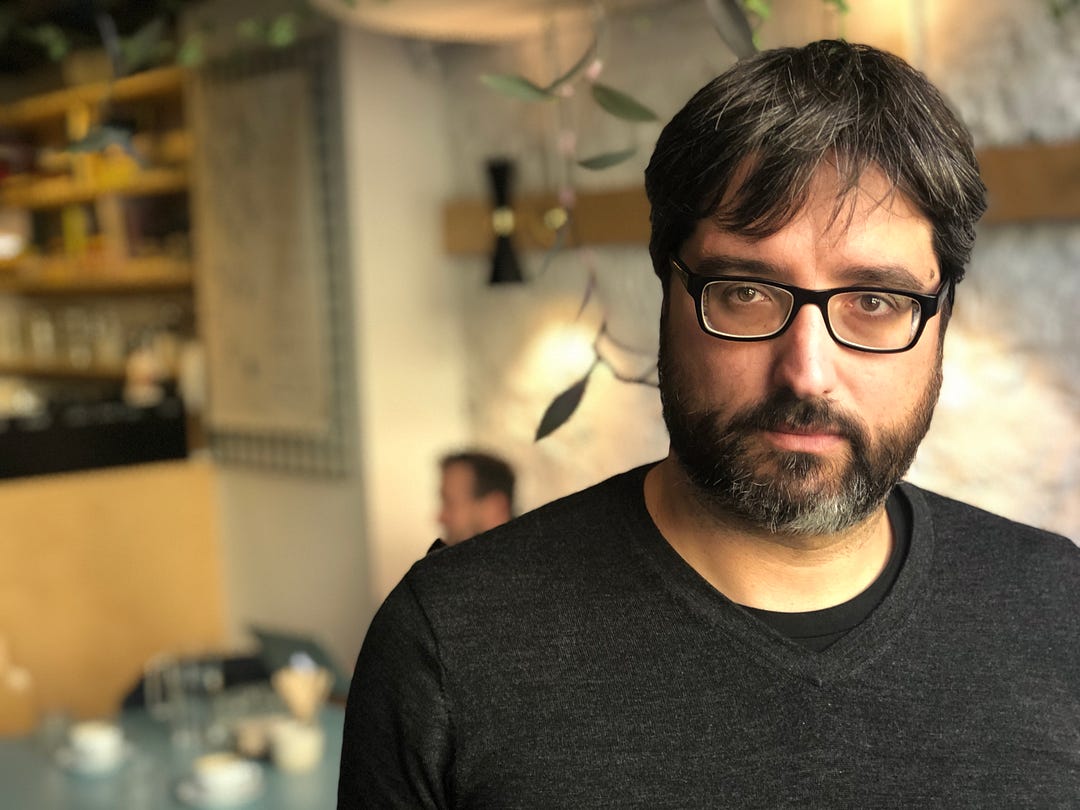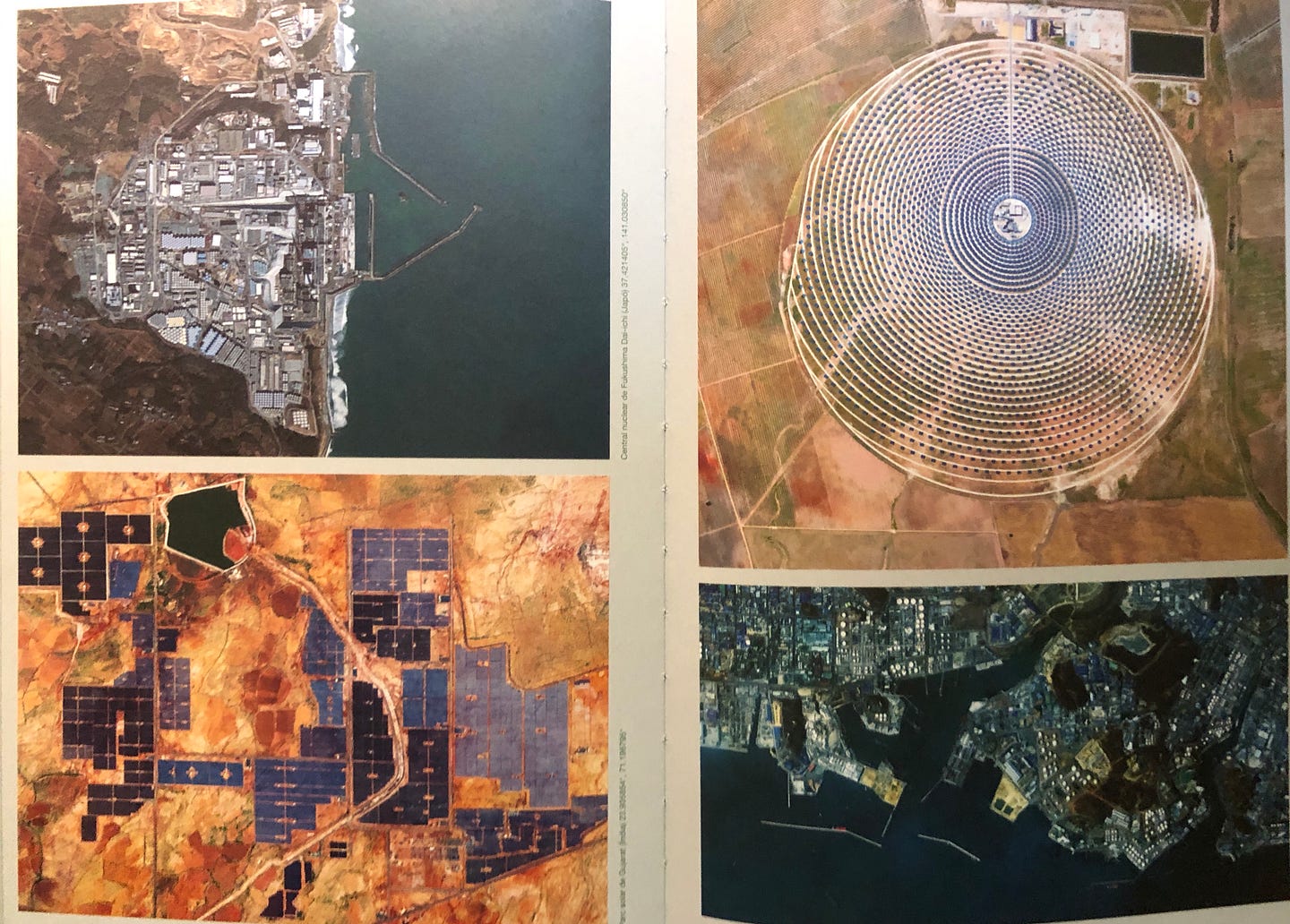
“Sounds super depressing,” she texted. “That’s why I haven’t gone. Sort of went full ostrich.”
That was my friend’s response when I asked her if she had attended Després de la fi del món (After the End of the World), the exhibition on the present and future of climate change at the Center of Contemporary Culture in Barcelona (CCCB).
Burying one’s head in the sand when it comes to climate change is a widespread impulse. It is, to put it brusquely, a bummer story — one whose drama is slow-moving, complex, and operating at planetary scale. The media, by and large, underreports it. Politicians who do not deny its existence struggle to coalesce around long-term solutions. And while a majority of people are concerned about climate change, few talk about it with friends and family.
Given all of this, it would seem unlikely that art, of all things, can make much of a difference in how we think about that story.
José Luis de Vicente, the curator of Després de la fi del món, believes that it can.
“The arts can play a role of fleshing out social scenarios showing that other worlds are possible, and that we are going to be living in them,” de Vicente wrote recently. “Imagining other forms of living is key to producing them.”


The forms of living on display at Després de la fi del món are an immersive, multi-sensory confrontation. The show consists of nine scenes, each a chapter in a spatial essay on the present and future of the climate crisis by some of the foremost artists and thinkers contemplating the implications of the anthropocene.
In one, I find myself in a London apartment in the year 02050.¹ The familiar confines of cookie-cutter IKEA furniture give way to an unsettling feeling as the radio on the kitchen counter speaks of broken food supply chains, price hikes, and devastating hurricanes. A newspaper on the living room table asks “HOW WILL WE EAT?” The answer is littered throughout the apartment, in the form of domestic agriculture experiments glowing under purple lights, improvised food computers, and recipes for burgers made out of flies.

In another, I am surrounded by satellite imagery of the Earth that reveals the beauty of human-made systems and their impact on the planet.

The most radical scene, Rimini Protokoll’s “Win><Win,” is one de Vicente has asked me not to disclose in detail, so as to not ruin the surprise when Després de la fi del món goes on tour in the United Kingdom and Singapore. All I can say is that it has something to do with jellyfish, and that it is one of the most remarkable pieces of interactive theater I have ever seen.

Visitors transition between scenes via waiting rooms that de Vicente describes as “decompression chambers.” In each chamber, the Minister Of The Future, played by philosopher Timothy Morton, frames his program. The Minister claims to represent the interests of those who cannot exert influence on the political process, either because they have not yet been born, or because they are non-human, like the Great Barrier Reef.

A key thesis of Després de la fi del món is that knowing the scientific facts of climate change is not enough to adequately address its challenges. One must be able to feel its emotional impact, and find the language to speak about it.
My fear—and the reason I go “full ostrich”—has long been that such a feeling would come about only once we experience climate change’s deleterious effects as an irrevocable part of daily life. My hope, after attending the exhibition and speaking with José Luis de Vicente, is that it might come, at least in part, through art.
“This Civilization is Over. And Everybody Knows It.”
The following interview has been edited for length and clarity.
AHMED KABIL: I suspect that for a lot of us, when we think about climate change, it seems very distant — both in terms of time and space. If it’s happening, it’s happening to people over there, or to people in the future; it’s not happening over here, or right now. The New York Times, for example, published a story finding that while most in the United States think that climate change will harm Americans, few believe that it will harm them personally. One of the things that I found most compelling about Després de la fi del món was how the different scenes of the exhibition made climate change feel much more immediate. Could you say a little bit about how the show was conceived and what you hoped to achieve?

JOSÉ LUIS DE VICENTE: We wanted the show to be a personal journey, but not necessarily a cohesive one. We wanted it to be like a hallucination, like the recollection of a dream where you’re picking up the pieces here and there.
We didn’t want to do a didactic, encyclopedic show on the science and challenge of climate change. Because that show has been done many, many times. And also, we thought the problem with the climate crisis is not a problem of information. We don’t need to be told more times things that we’ve been told thousands of times.

We wanted something that would address the elephant in the room. And the elephant in the room for us was: if this is the most important crisis that we face as a species today, if it transcends generations, if this is going to be the background crisis of our lives, why don’t we speak about it? Why don’t we know how to relate to it directly? Why does it not lead newspapers in five columns when we open them in the morning? That emotional distance was something that we wanted to investigate.
One of the reasons that distance happens is because we’re living in a kind of collective trauma. We are still in the denial phase of that trauma. The metaphor I always like to use is, our position right now is like the one you’re in when you go to the doctor, and the doctor gives you a diagnosis saying that actually, there’s a big, big problem, and yet you still feel the same. You don’t feel any different after being given that piece of news, but at the same time intellectually you know at that point that things are never going to be the same. That’s where we are collectively when it comes to climate change. So how do we transition out of this position of trauma to one of empathy?

We also wanted to look at why this was politically an unmanageable crisis. And there’s two reasons for that. One is because it’s a political message no politician will be able to channel into a marketable idea, which is: “We cannot go on living the way we live.” There is no political future for any way you market that idea.
The other is—and Timothy Morton’s work was really influential in this idea—the notion that: “What if simply our senses and communicative capacities are not tuned to understanding the problem because it moves in a different resolution, because it proceeds on a scale that is not the scale of our senses?”
Morton’s notion of the hyper-object—this idea that there are things that are too big and move too slow for us to see—was very important. The title of the show comes from the title of his book Hyperobjects: An Ecology of Nature After the End of the World (02013).
AHMED KABIL: One of the recent instances of note where climate change did make front-page news was the 02015 Paris Agreement. In Després de la fi del món, the Paris Agreement plays a central role in framing the future of climate change. Why?
JOSÉ LUIS DE VICENTE: If we follow the Paris Agreement to its final consequences, what it’s saying is that, in order to prevent global temperature from rising from 3.6 to 4.8 median degrees Celsius by the end of the 21st century, we have to undertake the biggest transformation that we’ve ever done. And even doing that will mean that we’re only halfway to our goal of having global temperatures not rise more than 2 degrees, ideally 1.5, and we’re already at 1 degree. So that gives a sense of the challenge. And we need to do it for the benefit of the humans and non-humans of 02100, who don’t have a say in this conversation.

There are two possibilities here: either we make the goals of the Paris Agreement—the bad news here being that this problem is much, much bigger than just replacing fossil fuels with renewable energies. The Tesla way of going at it, of replacing every car in the world with a Tesla—the numbers just don’t add up. We’re going to have to rethink most systems in society to make this a possibility. That’s possibility number one.
Possibility number two: if we don’t make the goals of the Paris Agreement, we know that there’s no chance that life in the end of the 21st century is going to look remotely similar to today. We know that the kind of systemic crises we have are way more serious than the ones that would allow essential normalcy as we understand it today. So whether we make the goals of the Paris Agreement or not, there is no way that life in the second part of the 21st century looks as it does today.
That’s why we open the exhibition with McKenzie Wark’s quote.
“This civilization is over. And everybody knows it.” — McKenzie Wark
This civilization is over, not in the apocalyptic sense that the end of the world is coming, but that the civilization we built from the mid-nineteenth century onward on this capacity of taking fossil fuels out of the Earth and turning that into a labor force and turning that into an equation of “growth equals development equals progress” is just not sustainable.

So with all these reference points, the show asks: What does it mean to understand this story? What does it mean to be citizens acknowledging this reality? What are possible scenes that look at either aspects of the anthropocene planet today or possible post-Paris futures?
This show should mean different things for you whether you’re fifty-five or you’re twelve. Because if you’re fifty-five, these are all hypothetical scenarios for a world that you’re not going to see. But if you’re twelve this is the world that you’re going to grow up into.
02100 may seem very far away, but the people who will see the world of 02100 are already born.
AHMED KABIL: What role will technology play in our climate change future?
JOSÉ LUIS DE VICENTE: Technology will, of course, play a role, but I think we have to be non-utopian about what that role will be.
The climate crisis is not a technological or socio-cultural or political problem; it’s all three. So the problem can only be solved at the three axes. The one that I am less hopeful about is the political axis, because how do we do it? How do we break that cycle of incredibly short-term incentives built into the political power structure? How do we incorporate the idea of: “Okay, what you want as my constituent is not the most important thing in the world, so I cannot just give you what you want if you vote for me and my position of power.” Especially when we’re seeing the collapse of systems and mechanisms of political representation.

I want to believe—and I’m not a political scientist—that huge social transformations translate to political redesigns, in spite of everything. I’m not overly optimistic or utopian about where we are right now. But our capacity to coalesce and gather around powerful ideas that transmit very easily to the masses allows for shifts of paradigm better than previously. Not only good ones, but bad ones as well.
AHMED KABIL: Is there a case for optimism on climate change?
JOSÉ LUIS DE VICENTE: I cannot be optimistic looking at the data on the table and the political agendas, but I am in the sense of saying that incredible things are happening in the world. We’re witnessing a kind of political awakening. These huge social shifts can happen at any moment.
And I think, for instance, that the fossil fuel industry knows that it’s the end of the party. What we’re seeing now is their awareness that their business model is not going to be viable for much longer. And obviously neither Putin nor Trump are good news for the climate, but nevertheless these huge shifts are coming.

Kim Stanley Robinson always mentions this “pessimism of the intellect, optimism of the will.” I think that’s where you need to be, knowing that big changes are possible. Of course, I have no utopian expectations about it—this is going to be the backstory for the rest of our lives and we’re going to have traumatic, sad things happening because they’re already happening. But I’m quite positive that the world will definitely not look like this one in many aspects, and many things that big social revolutions in the past tried to make possible will be made possible.
If this show has done anything I hope it’s made a small contribution in answering the question of how we think about the future of climate change, how we talk about it, and how we understand what it means. We have to exist on timescales more expansive than the tiny units of time of our lives. We have to think of the world in ways that are non-anthropocentric. We have to think that the needs and desires of the humans of now are not the only thing that matters. That’s a huge philosophical revolution. But I think it’s possible.
Notes
[1] The Long Now Foundation uses five digit dates to serve as a reminder of the time scale that we endeavor to work in. Since the Clock of the Long Now is meant to run well past the Gregorian year 10,000, the extra zero is to solve the deca-millennium bug which will come into effect in about 8,000 years.
Learn More
- Stay updated on the After The End of The World exhibition.
- Read The Guardian’s 02015 profile of Timothy Morton.
- Watch Benjamin Grant’s upcoming Seminar About Long-Term Thinking, “Overview: Earth and Civilization in the Macroscope.”
- Watch Kim Stanley Robinson’s 02016 talk at The Interval At Long Now on how climate will evolve government and society.
- Read José Luis de Vicente’s interview with Kim Stanley Robinson.


